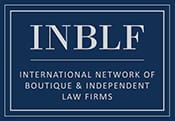Simple advice takes a complex regulatory path
By Eric F. Greenberg, Attorney-at-law
April 2019
Sometimes, a simple, everyday action can do wonders for one’s health. For example, experts in sanitation have long been urging folks to wash their hands frequently, to help prevent the spread of infections such as the common cold.
The advice to use sunscreen is a similarly simple admonition with significant health payoffs, helping to prevent skin cancer as well as sunburn and premature aging of skin.
If only the Food and Drug Administration’s history of regulating sunscreens was as simple. The whole, decades-long background story is available on FDA’s web site, and if you’re interested in all the details, you can find all the relevant documents there. After you review them, please explain them to me. Meanwhile, below are some of the highlights.
The most recent highlight is that in February, the FDA proposed a set of regulations about sunscreen drug products for OTC use. Sunscreens are “drugs” under the law, because they are intended to help prevent sunburn, and some claim to decrease the risk of skin cancer and early skin aging caused by the sun. The law says that products (other than food) that are intended to decrease risk of disease or to affect the structure or function of the body are drugs.
More specifically, sunscreens are over-the-counter drugs, as opposed to prescription drugs. OTC drugs have their own special regulatory regime, and it goes like this: FDA lumps OTC drugs into broad categories based on their intended uses, reviews evidence of safety and effectiveness for active ingredients, and when they’re done looking at everything they issue a regulation called a “monograph” that lists a whole range of specifications for drugs of that type.
Monographs tell you what active ingredients are permitted for drugs of that type, what dosage levels and label statements including warnings are required for them, and other details. If you make an OTC drug that meets all the specs in the monograph, your drug is, by definition, not a “new drug” requiring FDA approval before marketing (although all other relevant FDA requirements apply, so, for example, you’ll still have to be sure to make it according to current Good Manufacturing Practices.) The gist of a monograph is that the products it blesses have been found by FDA to be generally recognized as safe and effective, and therefore, by definition they are not “new drugs”.
FDA issued a monograph for sunscreens in 1999, but later FDA “stayed” it, that is, held it up, because it was persuaded that additional information was needed on several issues. FDA’s new action in February is inspired by “changed conditions,” it says, in the nearly 20 years since it published the stayed monograph, though these proposed regulations are being issued specifically because Congress required it to finalize the monograph in a law called the Sunscreen Innovation Act in 2014.
FDA’s February announcement contains significant proposed changes in the way sunscreens are labeled and about which ingredients can be used to make them.
For example, FDA is proposing that sunscreens that qualify would be able to be labeled as having an SPF (sun protection factor) of 60+, up from 50+ (even though some products might actually have an SPF of up to 80.)
In the past 18 years, FDA says, “the body of scientific evidence linking [ultraviolet A] exposure to skin cancers and other harms has grown significantly.” Therefore, FDA is changing the rules to avoid the situation that sometimes arises of sunscreens with high SPF that don’t “pass the current broad spectrum [protection] test” or protect against sunburn but not UVA, which can contribute to skin cancer or early skin aging. “For sunscreen products that have not been shown to help prevent skin cancer or early skin aging caused by the sun, the SPF statement would be followed by an asterisk (*) directing consumers to see the ”Skin Cancer/Skin Aging alert” elsewhere on the label,” says FDA.
Also, FDA is proposing to require new and different information on the Principal Display Panel (i.e., front) of retail product labels, because that is “the part of a product label that is most likely to be viewed or examined when the product is displayed for retail sale,” says FDA. It is calling for the products’ “statement of identity,” or generic name, to contain an “alphabetical listing of the sunscreen active ingredients in the product, followed by ”Sunscreen” and the product’s dosage form (such as lotion or spray).”
The agency is also taking into account the relative predominance of various elements of the label, saying, “…to prevent required information from being obscured or overwhelmed by other labeling features, we are revising the format requirements for the SPF, broad spectrum, and water resistance statements on the PDP.”
As for ingredients themselves, the proposal calls for zinc oxide and titanium dioxide to be considered generally recognized as safe and effective for use in sunscreens, but for PABA and Trolamine salicylate to be found not to be so. And FDA is asking for more data on twelve other ingredients, making clear that it’s not saying they are unsafe-if they had concluded they are unsafe, it would have categorized them as such. Instead, FDA invited industry to submit extra information about them, and in the meantime will not take action against products containing them as long as they don’t appear to pose a potential health hazard, and the companies make the necessary adverse event reports for OTC drugs, and meet other criteria.
Public comments on these proposals are due, for now, by May 28, 2019, but, given the history of this saga, don’t be surprised to see that deadline extended, and the final regulations to differ from the proposals. PW
Eric Greenberg can be reached at [email protected] Or visit his firm’s Web site at www.ericfgreenbergpc.com.
INFORMATIONAL ONLY, NOT LEGAL ADVICE.
This article is informational only and is not intended as, and should not be considered to be, legal advice.
Be sure to check for any updated information about the topics discussed in this article.


